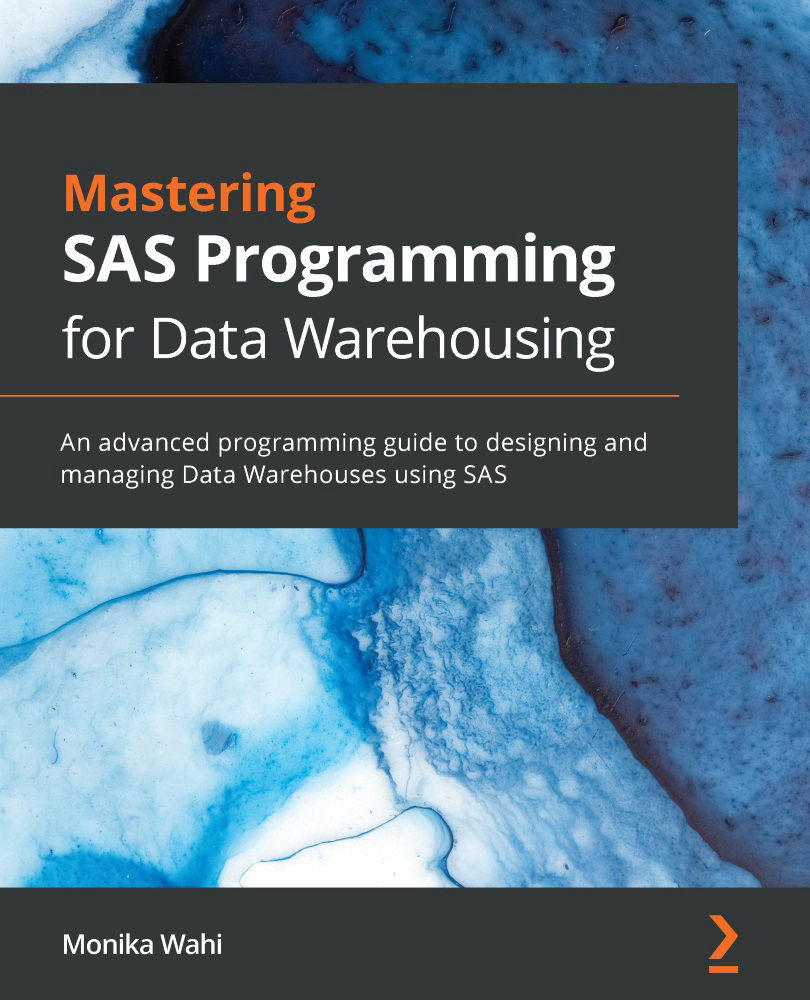Summary
In this chapter, we went over the different ways to serve SAS data to other systems, and different ways to connect SAS data warehouse environments to non-SAS storage. First, we discussed preparing data extracts to be served up to another environment asynchronously. We went over de-identifying data and implementing data de-identification in the warehouse workflow, and what would be needed to serve up data in a star schema. Next, we talked about connecting a SAS data warehouse to non-SAS data storage using SAS/ACCESS and an ODBC connection. We discussed how views work in PROC SQL, and how SAS and PROC SQL language can be used for data transfer. We looked at copying tables into a SAS database from a SQL database this way, as well as exporting SAS tables from our warehouse into a SQL database. Finally, we talked about how data transfer paradigms differ when being done for reporting purposes.
If you work at a data warehouse, you will likely be asked to do tasks such as the ones...


































































